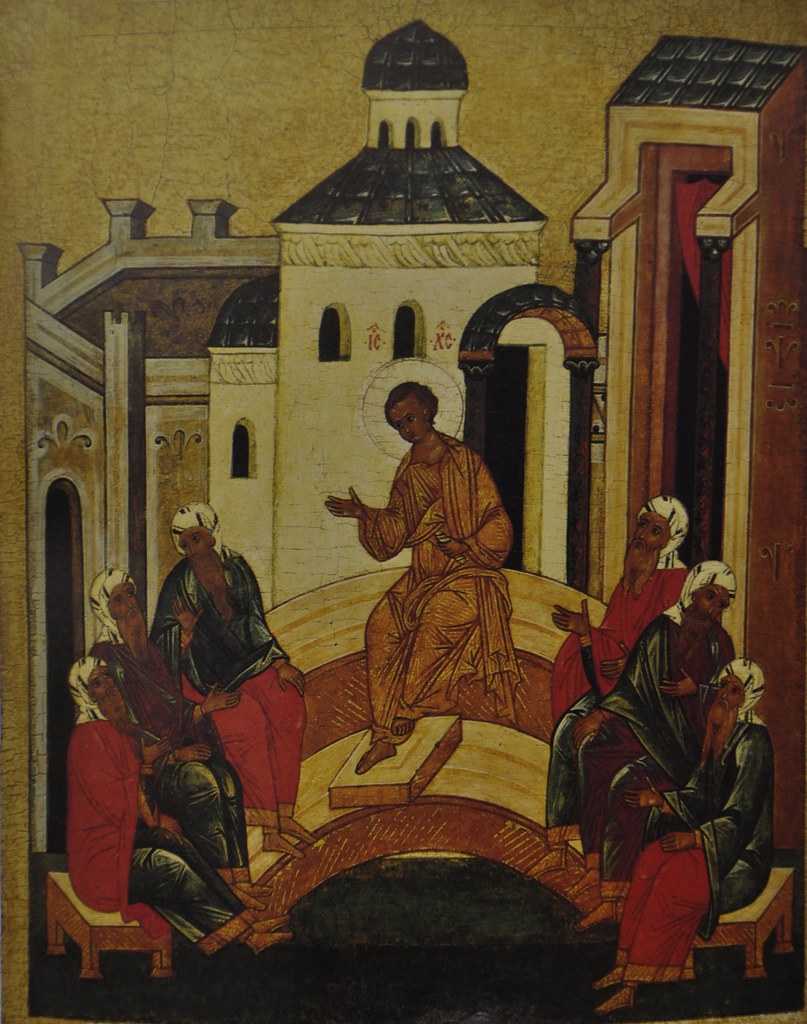At that time Jesus went on through cities and villages, preaching and bringing the good news of the Kingdom of God. And the twelve were with Him, and also some women who had been healed of evil spirits and infirmities: Mary, called Magdalene, from whom seven demons had gone out, and Joanna, the wife of Chuza, Herod’s steward, and Susanna, and many others, who provided for Him out of their means.
Luke 8:1-3 (Gospel for feast of St. Mary Magdalene)
On July 22, we celebrate the feast of St. Mary Magdalene, who has the title “equal to the Apostles.” She was from a town of Magdala in Galilee, and this is why she is called Mary Magdalene. Christ cast out seven demons from her, and she became a faithful disciple of His. There is an incorrect tradition that she was a “sinful woman” depicted in the Gospel, but this is not true. She is merely someone that was afflicted with demonic possession and was healed by Christ, in the same way that He healed others from their sicknesses.
We know that the Lord chose twelve men to be His disciples. We also know that there were a number of women who also followed after Him, who as we read in the Gospel, “provided for Him out of their means.” (Luke 8:3) We also know that St. Mary Magdalene came from a wealthy family, so she would have been able to assist in this. At the crucifixion, all of the disciples fled, except for John. It was the women who stood at a distance, watching over the scene, and it was these same women who, after the death of Jesus, came to assist in making sure He received a proper burial. One was buried in those days by being anointed with spices, in order to keep the stench of decay at bay. Mary Magdalene was one of seven women, in addition to the Virgin Mary, who ministered to Jesus in death and now they are known as the “Myrrh-bearing women.”
After the Resurrection, it was Mary Magdalene who first came to the tomb of Jesus and found the stone rolled away. It was she who ran to tell the news to Peter and John, thus making her the first to proclaim the Resurrection. When she returned to the tomb and was weeping outside, she was the first to see the risen Christ.
One of the cherished Orthodox traditions at Pascha is when we crack red eggs and proclaim “Christ is Risen!” And it is likely that this comes from St. Mary Magdalene. After the Resurrection, not much is known about St. Mary Magdalene. However, tradition holds that after the Resurrection she continued to witness and share the Resurrection and she started to use an egg to proclaim the message. The shell of the egg represents the tomb, and the chick emerging from the shell is analogous to Christ rising from the tomb.
Her wealth allowed her to receive an audience with the Roman Emperor Tiberius, and during this encounter, after denouncing Pontius Pilate and how the trial of Jesus had been conducted, took out an egg and exclaimed to the Emperor “Christ is Risen!” The Emperor was unmoved and told her that there was a higher probability that the egg in her hand could turn red than that Christ had risen from the dead. The egg then turned red. It is possible that our Orthodox tradition of dying eggs red comes from this story of St. Mary Magdalene.
In the opening episode of the series “The Chosen,” (a popular series about the life of Christ) we are introduced to St. Mary Magdalene. And although this series expounds (and takes a little bit of literary license) on the Gospels, it shows potentially what the healing of Mary Magdalene might have looked like. In this account, Jesus quotes the prophecy of Isaiah, in saying “Thus says the Lord, He who created you, O Jacob, He who formed you, O Israel: ‘Fear not, for I have redeemed you; I have called you by name, you are Mine.’” (Isaiah 43:1) While the healing of Mary Magdalene may or may not have happened like this, the truth is that she was possessed by demons, and people in that state were shunned in the society of the time as being God-forsaken. Serious illness and maladies were believed to be a sign that God was not in a person. In healing Mary Magdalene, Jesus affirmed, indeed, that He was in her, that He desired for her to be redeemed and follow after Him. This is a lesson for all of us, that God desires each of us to embark on the journey to salvation and to follow after Him. There is no one who is excluded from this, regardless of how physically or spiritually sick we might be.
You followed Christ the Lord, who was born of the Virgin for us, and kept His laws, and you lived by His statutes; and thus as we celebrate your all-holy memorial, Mary Magdalene, today with faith we extol you, O most blessed Saint, and with divine love and longing, we honor your memory. (Apolytikion of St. Mary Magdalene, Trans. by Fr. Seraphim Dedes)
If one had predicted how the Resurrection would happen years before it did, there is no way one would think that St. Mary Magdalene would have been the first to see the Resurrected Christ. Which of course fulfills what Christ often said, “With God all things are possible.” (Matthew 19:26) The story of Mary Magdalene certainly demonstrates that.
